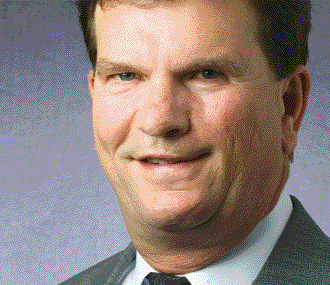Mark Tanner | Survival Guide: Perspectives from the field

Mark Tanner retired from FBI earlier this year and joined CollabraSpace Inc. of Annapolis, Md., to start up its law enforcement division. The company makes Web collaboration tools. Tanner recently spoke with Editor Nick Wakeman about the challenges of collaboration.
Mark Tanner knows collaboration. As an FBI special agent, he has participated in investigations and intelligence operations throughout the nation. He worked on the Oklahoma City bombing as well as drug interdiction along the U.S.-Mexico border. One of his most recent posts was director of a task force that tracks foreign terrorists for FBI's counterterrorism division.Tanner retired from FBI earlier this year and joined CollabraSpace Inc. of Annapolis, Md., to start up its law enforcement division. The company makes Web collaboration tools. Tanner recently spoke with Editor Nick Wakeman about the challenges of collaboration. Why is collaboration so hard? Time and distance between people who need to collaborate and build trust relationships are the biggest challenges. I managed different task forces, and putting people together in a room or building makes it easier. They can get to know one another, they can look over each other's shoulders, they can learn to share common objectives and develop common goals.But in our post 9/11 world, it isn't feasible to co-locate everyone. Some are in the United States, while others are dispersed around the globe. And resources are strained, which makes it more difficult. What are the principles of collaboration? You need to have a functional business process and a system that supports it. You have to identify your community of interest and what kind of expertise you need to support it, whether it is inside or outside your agency. If it is outside your agency, you solve that with memorandums of understanding and dissemination protocols.The tools for collaborating are varied. Some consider e-mail a tool, but it isn't comprehensive. There is chat [one-to-many communications], instant messaging, whiteboard technology [in which people draw on a virtual board] and audio-videoconferencing. How has collaboration changed? When I was the assistant agent in charge in Arizona during the Oklahoma City bombing investigation, we collaborated by conference calls. Every morning and every evening, we had a conference call with all of the command posts, and we would talk about what was new and whom we would interview over the next 12 hours. Overnight, we'd pass all the electronic information we had to Oklahoma City.Today, you can do that collaboration online and in real time. You don't have to wait until the conference call. For instance, CollabraSpace creates virtual rooms where documents are stored and shared. Every time something is added to that room or a document is edited, you can receive an alert. With Oklahoma City, you were investigating an incident, but in anti-terrorism efforts, there is no event. How is collaboration different in those situations? You need to have a community built around a specific interest. You define your topic and those who have information to contribute. You can create a place online where information is stored and shared. Several of these networks exist, but what is missing is real-time collaboration.Information is available, but once you find something of interest, giving it proper context requires someone familiar with how the information was collected and how it relates to other information the agency might have. That requires subject-matter expertise. What causes collaboration to break down? A lack of trust. Sometimes there are security concerns, but technology can advance security. With electronic records, you can track who has accessed data. With paper, there is no record. Sometimes different agencies, though they have the same objective, have different ideas on how to accomplish the objective. Leadership is the key to making things work, from executive leadership to first-line managers. One problem we hear about is that state and local governments pass on information, but don't get much back. It is easy to pass unclassified information into a classified environment. It's not so easy to extract unclassified portions from a classified environment. If it is not properly marked, it is difficult to extract. Therefore, there is a perception that it is one way ? and a lot of it is.The second thing is that when intelligence is shared, it's not very specific, because specifics aren't known. But the perception is that there must be more, which leads to feeling that information is being withheld when, in fact, it isn't.

WT:
Tanner:
WT:
Tanner:
WT:
Tanner:
WT:
Tanner:
WT:
Tanner:
WT:
Tanner:

Mark Tanner, of CollbraSpace Inc.
Courtesy photo
WT:
Tanner:
WT:
Tanner:
WT:
Tanner:
WT:
Tanner:
WT:
Tanner:
WT:
Tanner:
NEXT STORY: Forecast: Sizzling